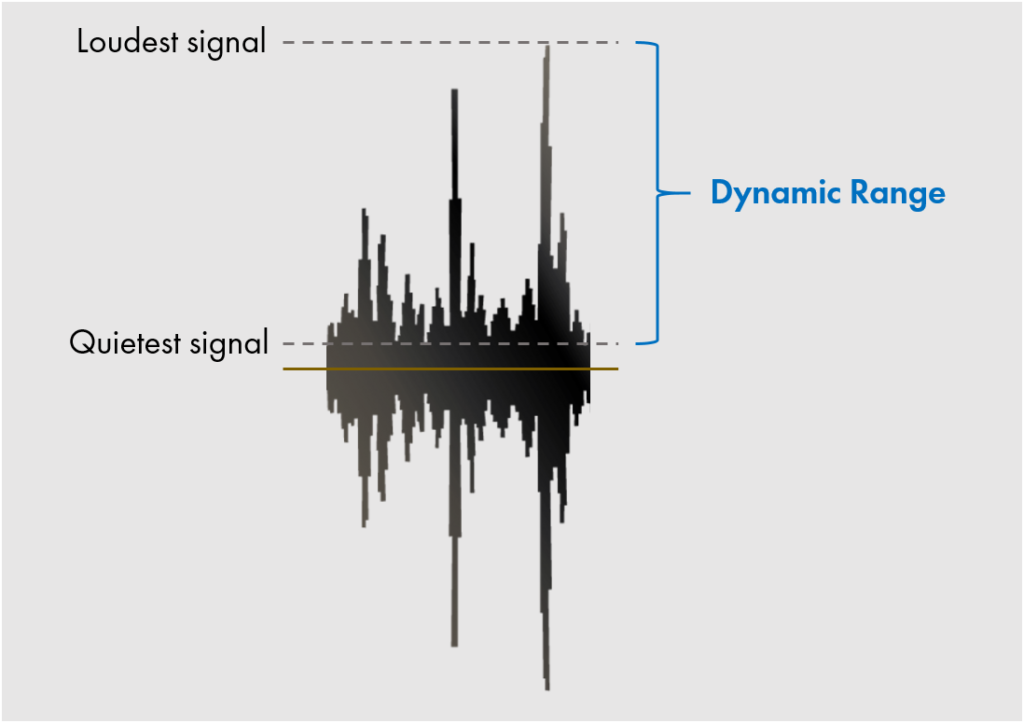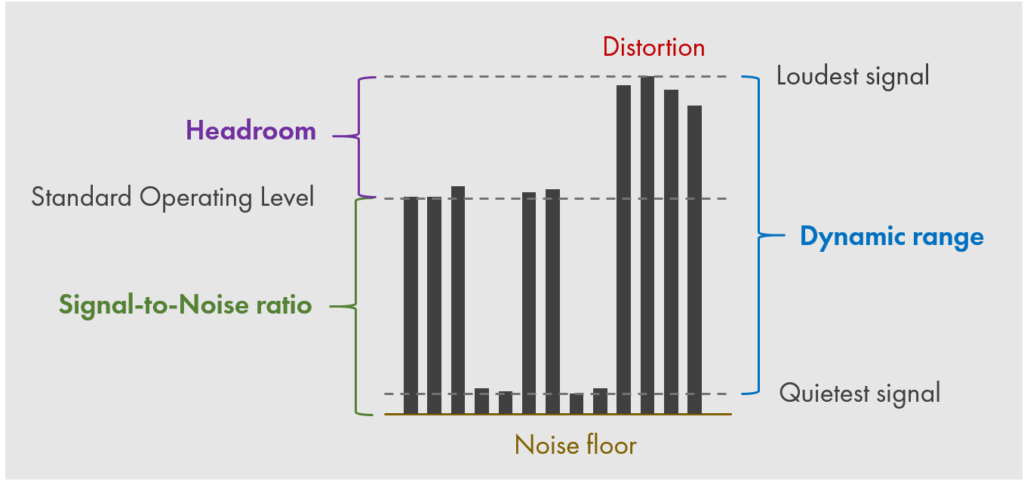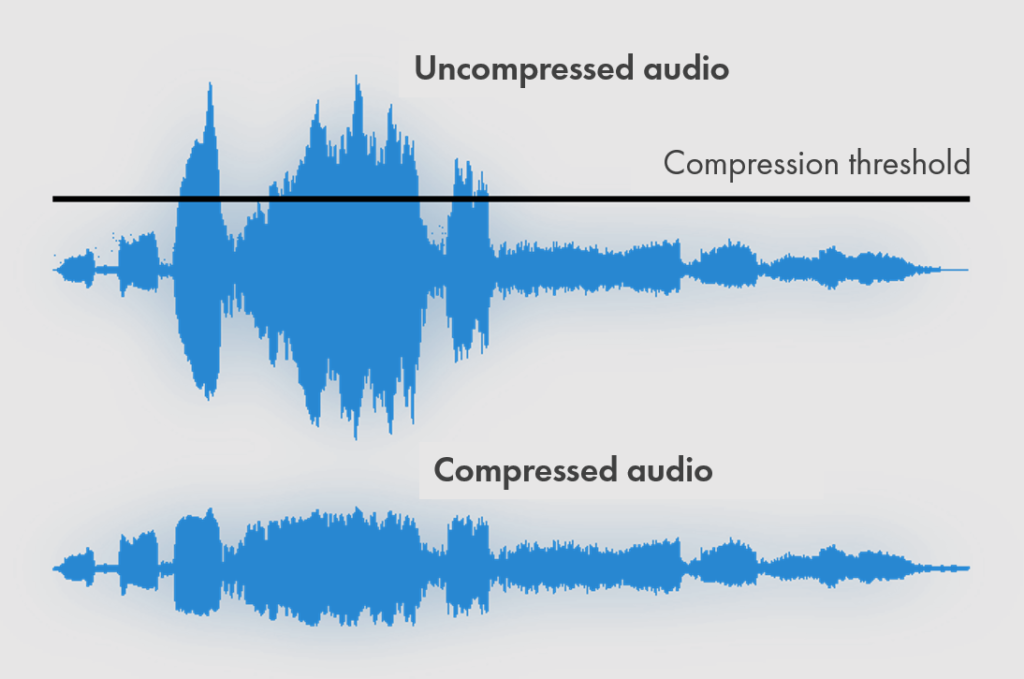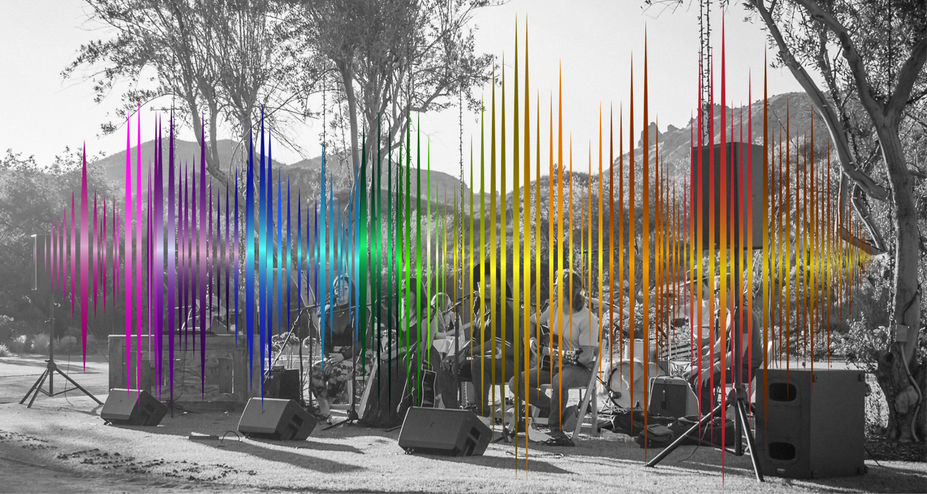Every genre of music is associated with a certain dynamic range, meaning the difference between the loudest and softest passages. The word “dynamic” is defined as “a force that stimulates change or progress within a system of process”. It defines how versatile a piece of music or a piece of gear behaves (musical instrument, amplifier, effects pedal, effects processor, etc.). The opposite of this is “static”, defined by “lacking in movement, action or change”.
Dynamics are therefore extremely important because they instill change, progression, etc. in music and in the creative process. This article will explore the concept in detail and explain why dynamic range is so important to the enjoyment of listening to both live and recorded music.
The Essence of Music
Dynamics are one of the essential ingredients (together with melodies, harmonies and rhythms) that make music pleasurable and compelling to listen to. A song that provides noticeable variations in level is usually more engaging than one that stays pretty much the same from beginning to end.
Pushed to the extreme, if a song has too wide a dynamic range, the quiet parts will not be heard clearly with the loudest parts being uncomfortably loud. Conversely, if the difference between loud and soft is too small, the music will sound squashed and might even be fatiguing to your ears, particularly when listened to at high levels.
In order to create drama, a musical artist, a songwriter or a producer will create arrangements that vary in volume and intensity. The variations can be subtle, like an increase in instrumentation, or they can be more obvious, like a break section (where most of the instruments stop playing) after a loud chorus.
For a drummer, the variations in dynamics between each beat are what gives the roll feeling and musicality. Singers also typically alternate between louder and softer parts from section to section, or even word by word.
What is Dynamic Range in Audio?
Simply put, dynamic range in music production is defined as the difference between the loudest peak and the quietest part, expressed in decibels (dB). Therefore, songs with a wide dynamic range will have a larger gap between the loudest sound and the quietest one.

Playback media and audio gear that reproduce music also have a dynamic range. For loudspeakers and headphones, we calculate the ratio between the loudest sound that the device can produce and the quietest one before noise becomes audible (the “noise floor”).
How much Dynamic Range can we hear?
It is worth mentioning that the human hearing is limited to a maximum dynamic range. Our auditory system has a dynamic range of about 90 dB, ranging from a 30 dB whisper to an airplane taking off at 120 dB. Beyond such levels, distortion starts to create physical pain.
In the analog audio world, the maximum dynamic range for analog equipment is somewhere between 50 and 60 dB. For digital audio, the theoretical dynamic range of un-dithered 20-bit quantization of a digital signal is 120 dB. For a 24-bit digital audio signal, we have 144 dB of dynamic range, much of which human hearing cannot detect since our threshold is at around 120 dB. Therefore, audio compression can be a useful tool in order to help satisfy our maximum range.
Difference between Dynamic Range and Signal-to-Noise
SNR stands for Signal-to-Noise-Ratio, and it is often confused with dynamic range. While these terms are often used interchangeably, they are not necessarily the same thing. SNR expresses the difference between the standard operating level of a device and the noise floor. In very simple terms, a good signal-to-noise-ratio is when your live signal is above the noise floor.
As stated before, Dynamic Range (DNR) measures the ratio between the loudest possible peak without distortion and the quietest one before noise becomes audible (typically hum or hiss). However, unlike SNR, dynamic range is not necessarily dependent on a signal: a dynamic range’s lowest limit is simply the softest sound that does not have a distorted output.
Additionally, the greater the dynamic range, the more headroom the device will have. The headroom covers the level range above the standard operating level, and before distortion appears. In short, for both specifications, the higher the value, the better.

How do you change Dynamic Range?
Generally, dynamic range is altered through the process of audio signal compression. Compressors reduce the difference of the volume range between the loudest sound and quietest sound, thereby altering the overall dynamics and dynamic range of a track.
One reason for reducing the dynamic range in recorded or live music is to allow the instruments and vocals to cut better through the mix and come forward. Also, when mastering a recorded track, engineers utilize compressors and limiters (ultra-powerful compressors) to shape dynamic ranges. As a result of bringing up the softest passages in a track, compression also has the effect of making processed signals louder.

It is worth noting that there are extremes in either direction. Dynamic ranges that are too wide can be delightfully musically, but lack the loudness needed for a comfortable listening experience. On the other hand, a very narrow dynamic range could be the result of too much compression, making a song disturbingly loud and devoid of the energy and musicality from the original dynamics.
Music Genres and Dynamic Range
If all music have inherently level fluctuations, some genres tend to have broader dynamic ranges than others. While recorded pop, rock, R&B, hip-hop and country music usually have a relatively modest dynamic range (typically around 10 dB), electronic dance music (EDM) has probably the smallest dynamic range (around 6 dB) but makes up for it by creating contrast with its almost infinite array of instrument colors and textures coming from synthesizers and samplers.
At the other end of the spectrum, jazz and classical music have considerably large differences between their quietest and loudest parts. In jazz, up-tempo songs typically vary from loud parts played on brass instruments to quiet piano and bass solos. A study of dynamic range in different musical styles conducted in 2016 revealed that dynamic ranges in jazz generally varied from 13 to 23 dB.
Classical recordings have the widest dynamic range of any genre. The same study cited above found that recorded classical music typically offers between 20 and 32 dB of dynamic range. The pinnacle is the dynamic range of a live symphony orchestra, which can reach as much as 90 dB.
Loudness and the Future of Music
Over the past 30 years, the amount of compression and limiting used in live performance and studio recordings alike has undoubtedly increased. To make music stand out on radio or in club sound systems, engineers often master songs with heavy compression in order to push tracks average levels as high as possible. This has created a split among musicians, often referred to as “the loudness wars”, and leading many to beg for their dynamic complexity back.
The cultural reduction in dynamic range, and therefore amplified loudness, has caused us to lose nuances in a song’s mix. Dynamic complexity is lost when compression is used at a higher rate.
Fortunately, streaming services have introduced a feature called Loudness Normalization, which automatically puts a ceiling on a song’s loudness. No matter how loud a recording is, it will be automatically turned down, so that it does not exceed this ceiling. As a result, when mastering for streaming, engineers no longer feel the need to reduce dynamic range to make songs louder. That has resulted in higher dynamic ranges in popular music, which are now in the 10 dB range, on average. Let’s hope that the era of squashing the life out of music is mostly over.
Fazit
There is no doubt that in order to reproduce music faithfully, loudspeakers must have good dynamic range capabilities. A simple test to evaluate such capability when listening to – or selecting – a loudspeaker is to use a well-recorded drum/percussion track that features soft parts and loud peaks to assess if the full track is well reproduced. No distortions should appear at any reproduced level and all subtle musical details should be revealed during the entire length of the track.
Regarding music recording/live performance, it seems there is no magic key to finding a track’s ideal dynamic range, but understanding the relationship between audio compression and how it affects your signal, will help you find the sweet spot.
While QSC TouchMix digital mixers have powerful, and extremely useful, on-board compressors and limiters, make sure you always use them to serve the performance or the recording with musicality and emotions in mind. Stay at the service of art.
